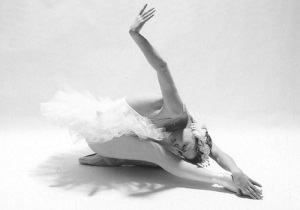 According to the reports, Plisetskaya unexpectedly passed away while preparing to travel to Lucerne, Switzerland. The Russian prima ballerina assoluta was a reference of her time.
According to the reports, Plisetskaya unexpectedly passed away while preparing to travel to Lucerne, Switzerland. The Russian prima ballerina assoluta was a reference of her time.
Maya Plisetskaya (Moscow, November 20, 1925 – Munich, May 3, 2015) is the most famous swan of the twentieth century, after Anna Pavlova, for whom the piece was created by Fokin in 1905. But her Dying Swan was completely different, it was not a delicate creature with broken wings, but almost an eagle, unsettled, that does not fade, does not give up slowly.
The trembling dying bird was energetic until the end. Here her magnificent port de bras made hers the definitive version. Maya Plisetskaya had a charming personality and an unmistakable style. Her technical virtuosity, expressiveness, elegance, her strength, her movement, her arms that were the core of her dance, and especially her leaps and proverbial leg extensions made her a reference of her time: an assoluta.
The critics recognize that Plisetskaya was the first as Kitri in Don Quixote, to defiantly arch and throw her head back in a grand jete. This position is now essential for all ballerinas in the role.
Her career was always marked by success. In 1989 Plisetskaya, at the age of 69, distanced herself from the stage, but she celebrated her 80th birthday dancing, en pointe, a piece especially created for her by Maurice Bejart, Ave María, which the choreographer would title, Ave, Maya.
A symbol of classical dance, she sought innovation. In 1967, she threw herself into the adventure of Carmen Suite, choreographed for her by Cuban Alberto Alonso, with music by her husband, Rodion Shchedrin, who composed a beautiful suite based on the themes of the homonymous opera by Bizet, while her uncle Boris Messerer painted the scenery.
“In Carmen it is very important to know why you’re on stage and what the gestures, eyes, legs, looks, mean. In this ballet it’s all about that, it is not obligatory to tear the legs apart,” the diva once explained. Plisetskaya also choreographed, in particular in the ballets Anna Karenina (1972), The Seagull (1980) and The Lady with the Dog (1985), inspired by the classics of Leon Tolstoi and Anton Chekhov.
I should add a more personal note. In 1980 I had the great fortune of attending the premiere of The Seagull at the Bolshoi Theatre in Moscow. Plisetskaya was sublime, surrounded by the music of Shchedrin, and the costume designs of Pierre Cardin.
Both accompanied her on stage to receive a standing ovation. Her extraordinary performances had already amazed me both times she was in Havana. The first in 1965, when she danced Swan Lake, and then in 1970, with Carmen Suite, together with the National Ballet of Cuba and Bolshoi soloists. On both occasions she danced The Dying Swan and she herself has recalled in interviews: “When I went to Havana I had to dance The Dying Swan three times in succession, at the insistence of the audience, something I will never forget.” It is beautiful to be able to say: I saw Plisetskaya dance.
The sublime dancer had another relationship with the island. Her brother Azari joined the National Ballet of Cuba in 1963 in which he spent ten years as a dancer, choreographer and teacher.
For the company run by prima ballerina assoluta Alicia Alonso, he created La Avanzada (1964), Primer Concierto (1971) and Canto Vital (1973), besides being Alicia’s partner in numerous performances.
According to the reports, Plisetskaya unexpectedly passed away while preparing to travel to Lucerne, Switzerland, where she was due on May 15 to receive the first of a series of tributes that would culminate in London in November, on the occasion of her 90th birthday.
Maya Plisetskaya has gone. It should be remembered that according to her a swan can be a bird that fights to the finish. She is an Immortal Swan.
(Mireya Castañeda, Granma)